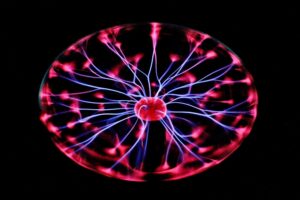Artificial Intelligence (AI) has become one of the most transformative technologies in recent years, revolutionizing industries from healthcare to finance and everything in between. But what exactly is AI, and how does it work? In this blog post, we delve into the science behind artificial intelligence, exploring its incredible capabilities while also examining its limitations. From machine learning algorithms to neural networks, join us on a journey through the fascinating world of AI – where cutting-edge technology meets human ingenuity!
What is Artificial Intelligence?
The term “artificial intelligence” was first coined in 1956, by computer scientist John McCarthy. McCarthy defined it as “the science and engineering of making intelligent machines.” Since then, the field of AI has grown exponentially, with new research and applications emerging every year.
So, what exactly is AI? At its core, AI is all about creating machines that can perform tasks that ordinarily require human intelligence, such as understanding natural language and recognizing objects. To do this, AI relies on a number of different technologies, including machine learning, which is a method of teaching computers to learn from data; and natural language processing (NLP), which enables computers to understand human language.
AI has already made significant strides in recent years. For example, there are now many different AI-powered personal assistants available, such as Amazon’s Alexa and Apple’s Siri. This technology is also being used to develop self-driving cars, which are currently being tested by a number of major companies, including Google and Tesla.
Looking to the future, it’s clear that AI will continue to revolutionize the world as we know it. So far, it has shown great promise in a wide range of fields, from healthcare to transportation. As AI technology continues to evolve, we can only imagine what other amazing advances it will bring about.
The Different Types of Artificial Intelligence
There are different types of artificial intelligence (AI), each with its own set of capabilities and limitations. Here, we explore the three most common types of AI: rule-based systems, learning systems, and natural language processing systems.
Rule-based systems are the simplest form of AI. They follow a set of predefined rules to solve a problem or complete a task. While they can be effective in some situations, they are often limited in their ability to deal with complex problems or tasks.
Learning systems are more complex than rule-based systems and are able to learn from data. This allows them to improve over time as they are exposed to new data. These systems can be used for a variety of tasks, including pattern recognition, classification, and prediction.
Natural language processing (NLP) systems are the most complex type of AI. They are designed to interpret and understand human language. NLP systems can be used for tasks such as automatic translation, text summarization, and question answering.
How Artificial Intelligence Works
Artificial intelligence technology has come a long way since its inception in the 1950s. However, there is still a lot of mystery surrounding how exactly it works. In this section, we will attempt to demystify some of the workings of AI by exploring its capabilities and limitations.
When most people think of artificial intelligence, they imagine a robot that can think and act like a human. However, this is only one type of AI known as general artificial intelligence. There are also other types of AI such as narrow artificial intelligence which is designed to complete specific tasks.
So how does AI actually work? To put it simply, AI algorithms are able to learn and improve on their own by processing data and making predictions. For example, if you were to show an AI algorithm a series of images, it would be able to learn the patterns and eventually be able to recognize new images that it has never seen before.
However, these algorithms are not perfect and sometimes make mistakes. This is where the limitations of AI come into play. Some experts believe that AI will never be able to fully replicate human intelligence due to these limitations. However, others believe that these limitations will eventually be overcome as the technology continues to develop.
Pros and Cons of Artificial Intelligence
When it comes to artificial intelligence (AI), there are pros and cons to its use. On the one hand, AI has the potential to revolutionize many industries and make our lives easier. For instance, AI can be used to create more efficient algorithms, automate repetitive tasks, and improve decision-making processes. Additionally, AI can help us process large amounts of data more quickly and effectively than we could on our own.
On the other hand, there are some potential dangers associated with AI. As AI becomes more advanced, there is a risk that it could eventually surpass human intelligence. This could lead to robots becoming self-aware and making decisions that could harm humans. Additionally, as AI becomes more ubiquitous, there is a risk of job loss as machines increasingly take over traditional human jobs.
Overall, the pros and cons of AI need to be carefully considered before implementing any wide-scale changes. However, if used correctly, AI has the potential to greatly improve our lives in a variety of ways.
Applications of Artificial Intelligence

Artificial intelligence has a wide range of applications in many different industries. Some of the most common applications are listed below:
-Autonomous vehicles: AI is used to develop self-driving cars that can navigate without human input.
-Fraud detection: AI can be used to identify fraudulent activity, such as fake reviews or financial scams.
-Predictive maintenance: AI can be used to predict when equipment will need maintenance, based on data such as usage patterns and previous failures.
-Chatbots: AI is used to develop chatbots that can mimic human conversation. Chatbots are often used to provide customer support or sales assistance.
-Speech recognition: AI is used to develop systems that can convert spoken words into text. This technology is used in voice-controlled assistants such as Siri and Alexa.
Ethics and Artificial Intelligence
Ethics and Artificial Intelligence explores the capabilities and limitations of AI from an ethical standpoint. With the rapid development of AI technology, it is important to consider the ethical implications of its use. There are many potential applications of AI that could have a profound impact on society, including medical diagnosis, autonomous vehicles, and predictive policing. As such, it is important to consider the ethical implications of these applications before implementing them.
There are a number of ethical concerns that need to be considered when developing AI applications. First, there is the issue of data privacy. AI systems often require large amounts of data in order to function properly. This raises concerns about how this data will be used and whether it will be kept private. Second, there is the issue of bias in AI systems. AI systems can often learn and replicate the biases of those who train them. This can lead to discriminatory outcomes if not careful
Conclusion
Artificial Intelligence and its potential to reshape our world is both a fascinating and complex subject. In this article, we explored the capabilities of AI and discussed some of the challenges that scientific researchers face when attempting to create machines with human-level intelligence. We also highlighted some of the ethical questions raised by machine learning technology and discussed how scientists are addressing them. As research in this field continues, it will be interesting to see what implications AI has for our future lives.








